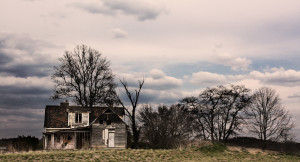Zechariah was a prophet to the remnant who returned to their land after the 70 year captivity. Through Zechariah’s eight visions of the night God discloses how Israel’s foes will be destroyed, her idols removed, her city and Temple restored, and her Messiah revealed. Haggai and Zechariah labored together as prophets in the rebuilding of the temple, and tradition tells us they were buried in the same grave. In the first four chapters of Zechariah four different trees are mentioned. The first tree found is the Myrtle tree (1:10-11).
In Scripture the myrtle tree is always seen as a picture or sign of the millennial blessing for Israel. The branches of the Myrtle tree were used in the construction of the booths during the feast of tabernacles, which was a feast looking forward to the Millennium (Neh. 8:15). While speaking of the millennial kingdom Isaiah prophesied, “…instead of the brier shall come up the myrtle tree…(Is. 55:13).”
There are many unique patterns that form in the grain of the myrtle. Myrtle trees grow slowly, and the struggle or stress during the growth of the tree causes the patterns and unique figurations. When seen on a hill or in a pasture the mature myrtle is so symmetrical it would seem to be a carefully pruned, cultivated tree. As believers, we are going to face many struggles and encounter many long days that will seem as though God is silent. God is never late, inactive or not working. His “silence” means He is working in ways that cannot be seen in and around you. Like the myrtle, the final product will be one of maturity and beauty. All believers who have endured hardships, followed Christ, or have been through the pruning process have a Christ-likeness that those who have missed out on these “growing pains” do not possess.




You must be logged in to post a comment.